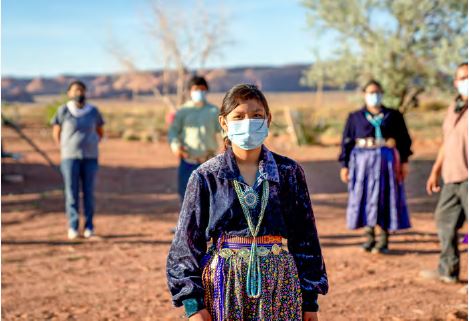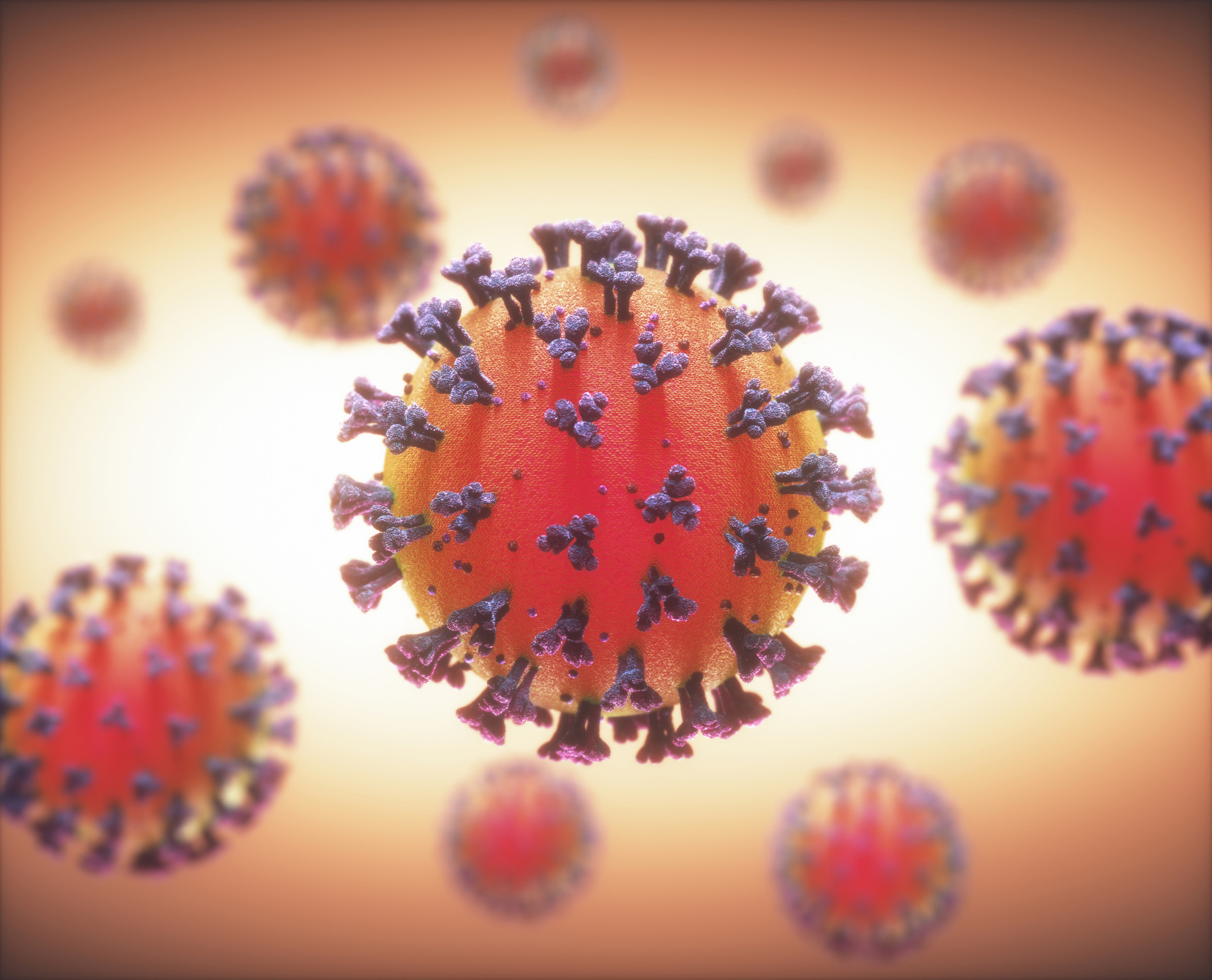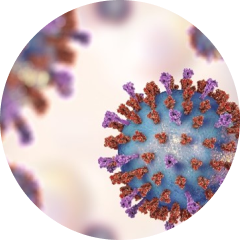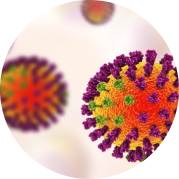
The short- and long-term harm that respiratory infections, such as COVID-19, RSV and influenza, can inflict has never been clearer. At Janssen, we’re fully committed to understanding these diseases so that we can both prevent infection and reduce symptoms for generations to come.
By focusing on vulnerable populations, we aim to improve health for everyone across the globe
At Janssen, we have a deep heritage of caring for those affected by respiratory infections. We have been actively engaged in fighting global pandemics for over a century, and this commitment to treating respiratory infections continues today.[1]
We are working tirelessly to help those with respiratory infections, including COVID-19, respiratory syncytial virus (RSV), and influenza, where innovative treatment and prevention approaches are urgently needed.[1],[2],[3]
COVID-19
The world urgently needs solutions to help combat the COVID-19 pandemic, which has caused a major global public health crisis affecting billions of people, directly or indirectly, worldwide. As part of Johnson & Johnson’s multi-pronged response to combat the COVID-19 pandemic, we are committed to rapid scientific progress towards treatment and prevention measures.

Structure of COVID-19
Respiratory syncytial virus (RSV)
While it is lesser known than flu, RSV is very prevalent, highly contagious and a leading cause of bronchitis and pneumonia in children.[4] With no preventive vaccine or effective antiviral treatment available, RSV is a large health and economic burden globally.[2]
Globally, RSV affects approximately 64 million people every year.[5] For children, older adults and those with underlying health conditions, RSV infection poses a high risk.[4],[6]

Structure of RSV
In Europe, RSV accounts for up to 72% of hospital admissions for respiratory tract infections in children under five.[7]
We are pursuing multiple avenues to address the serious harm caused by RSV infections. These include evaluating antivirals that aim to reduce signs, symptoms and complications of RSV infection by targeting the virus at different stages of replication.[4] Early diagnosis is also essential for maximising the benefit of these antivirals.[8] That’s why we are collaborating with diagnostic companies to develop platforms that will bring accurate, fast, and inexpensive diagnostics directly to patients and healthcare workers. Working with key healthcare stakeholders, we aim to prevent and treat RSV in vulnerable populations.[9]
Influenza
Influenza evolves and travels quickly, so reducing its burden is a complex challenge.[10], [11] In the World Health Organization (WHO) European Region, seasonal influenza epidemics can infect up to 20% of the population, causing substantial mortality; and a 2017 study showed that up to 72,000 people die because of influenza-associated respiratory disease each year.[11]
Nearly a third of the world’s population became infected during the 1918 flu pandemic [12] and an estimated 2.6 million people died in Europe.[13]
While seasonal vaccinations are currently the most effective way to prevent infection, reduce transmission and decrease the severity of illness, during most seasons influenza vaccines only reduce the risk of illness by 40-60% among the overall population.[14]
An influenza pandemic would pose an extreme public health risk, which is why we are working on multiple approaches to combat influenza.

Structure of influenza
Follow Us
CP-187341


